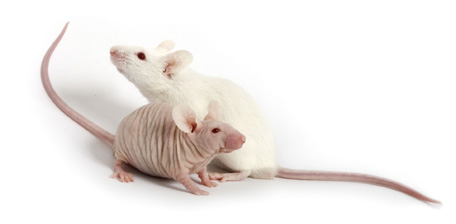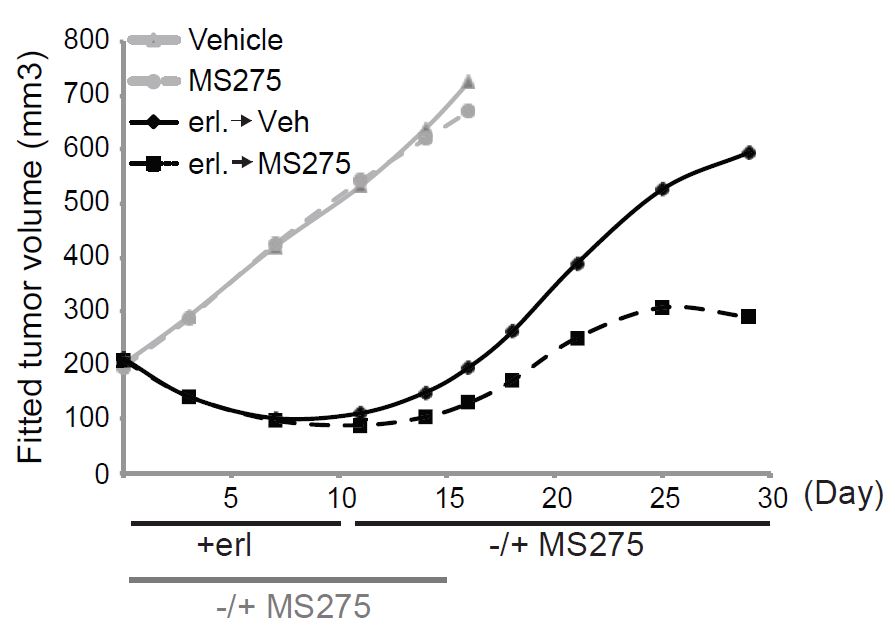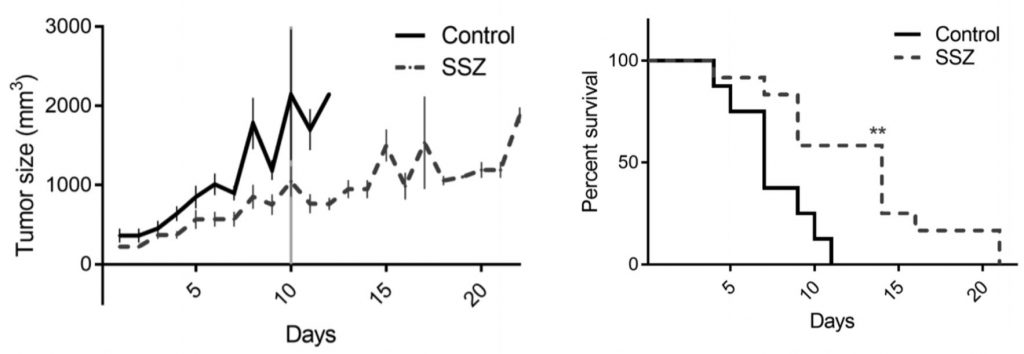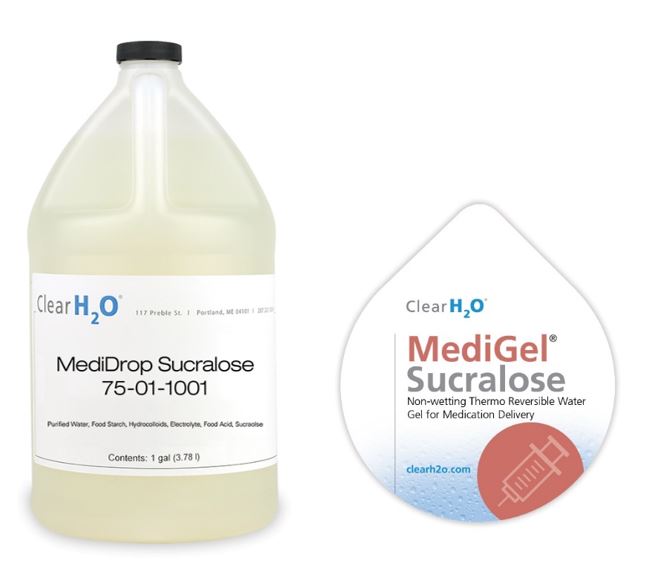

Chemotherapy Delivery to Rodents: 4 Drugs Tested in Gels
Cancer is amongst the leading causes of death worldwide. In the US alone, approximately 40% of people will be diagnosed with cancer at some point during their lifetimes. It’s no wonder then that oncology (the study of cancer) is one of the leading fields of research for new treatments and therapeutics (1, 2). Animal models, especially mice, are an invaluable tool and a necessary step in cancer research. They help us advance our knowledge and increase our understanding of this complex disease (such as how the tumors grow and spread), and are an essential tool in the development of new ways to test, diagnose, cure and prevent cancer.
Different mouse models are used in oncology research:
- Immunodeficient mice have a repressed immune system and thus show no rejection to tumor graft. Standard models include nude mice (lacking T-cell response and, yes, they are hairless!), SCID mice (lacking both T-cell and B-cell immunity), and triple immunodeficient mice (lacking T-cell, B-cells and NK cells).
- Humanized mice are immunodeficient mice that have been engrafted with human immune cells (hematopoietic stem cells (CD34+) or peripheral blood mononuclear cells (PBMC)) and present a functional human immune system.
- Patient-derived xenograft (PDX) models are immunodeficient mice that have been implanted with patient tumor tissue and are a relevant model to test the efficacy and side effects of treatments and therapies. They also allow the development of personalized or precision medicine that aims to customize treatment to an individual or a group of like patients.
Vendors such as The Jackson Laboratory, Charles River Laboratory, or Taconic offer a variety of models and services for oncology research.
In this blog article, we will review 4 different chemotherapies tested on mice, through oral delivery via ClearH2O’s MediGel® Sucralose and MediDrop® Sucralose.
Erlotinib (erl): EGFR Kinase Inhibitor
In this 2017 publication (3), Guler et al. aimed to study drug tolerance in cancer treatments. Drug resistance indeed remains a limitation to the efficacy of cancer therapies and is an important factor in disease relapse. Among other experiments, SCID mice were inoculated subcutaneously with PC9 cells (lung cancer) and treated orally with erl, an epidermal growth factor receptor (EGFR) inhibitor at 30 mg/kg in MediDrop® Sucralose for 10 days, either alone, or in combination with an injection of a second drug, the HDAC (histone deacetylase) inhibitor Ms275. Results showed that the tumor reduced in size with the erl treatment, and relapsed at a reduced rate with the MS275 treatment. Simply put, these results demonstrated that epigenetic modifications is a mechanism used by cancer cells to survive lethal drugs.

C16: Anti-Invasive Molecule
In this 2018 publication (4), Mus et al. aimed in particular to assess the toxicity of C16 as a novel anti-invasive treatment for metastatic cancers. Invasion (the extension and penetration of neighboring tissues by cancer cells) is the first step to the development of cancer metastases, which accounts for 93% of cancer-related deaths. Among other experiments, delivery of C16 to CD-1 male mice through MediGel® Sucralose was developed as an alternative to repeated (3 times daily) oral gavage.
In brief, C16 was dissolved into Dimethyl sulfoxide (DMSO) and injected in MediGel® Sucralose through the foil lid over several points. The cup was then vigorously shaken for at least two minutes, presented to the animals in a magnetic plastic holder (see available delivery devices here). The mix was stable for at least 6 days, but changed daily to measure consumption. Blood concentration and animal weight were also measured (see figures below).

The results showed that C16 was well-tolerated in acute and chronic experiments. Interestingly, the authors described that MediGel® Sucralose proved to be a suitable vehicle for drug delivery in chronic studies, and a suitable tool for evaluating the efficacy of C16 in future studies. According to the authors, delivery through MediGel® Sucralose shows many advantages:
- reduces handling and stress
- doesn’t disrupt the animals’ diurnal rhythm
- reduces the burden on the animal caretakers
- keeps the compound in suspension
- serves as a complete water replacement
- can be prepared on a flexible basis
- doesn’t require special equipment
Sulfasalazine (SSZ): Anti-Proliferative Drug
In this 2019 publication (5), Mooney at al. aimed to investigate the use of SSZ as a potential treatment for neuroblastoma (NB, a type of cancer that affects immature nerve cells in children 5 or younger) to reduce cell proliferation and nerve pain. High risk patients face a 50% survival rate despite aggressive treatments, and relapsed patients’ survival rate drops to 5%. Male nude mice were injected with SKNBE cells (from NB) and provided with MediDrop® Sucralose containing 3.6mg/ml SSZ, in addition to daily SSZ intraperitoneal injection at 150mg/kg.
Consumption of MediDrop® Sucralose and animals’ weight were measured. Much lower tumor growth rate and delayed mortality were observed in the SSZ treated group. Those results indicate that SSZ could be used to inhibit tumor growth in NB patients.

Erdafitinib: FGFR Inhibitor
In this 2020 publication (6), Yamamoto et al. aimed to evaluate the sensitivity and response of colorectal cancers to fibroblast growth factor receptor (FGFR) inhibitor treatment. Some colorectal cancer patients present genetic mutations in FGFR, but show poor prognosis, invasiveness and metastatic potential, as FGF signaling plays a crucial role in cell proliferation, migration and survival. Among other experiments, female nude mice were injected with HC1T, HC6T or HC20T (colorectal cancer cell lines) and treated with erdafitinib (a fibroblast growth factor receptor (FGFR) inhibitor) in MediGel® Sucralose and/or cetuximab (an epidermal growth factor receptor (EGFR) inhibitor) intraperitoneally.
Results show that monotherapies and/or combination of the 2 therapeutics inhibited the tumor growth and even reduced the tumor volume in some cases, demonstrating that some colorectal cancer patients may benefit from FGFR inhibitor therapy.

In conclusion, through the above 4 studies from independent research institutes, ClearH2O’s MediGel® Sucralose and MediDrop® Sucralose have been proven to be efficient methods of delivery for oral therapies for mouse models of cancer, and are useful tools to study the efficiency and toxicity of those therapies in animal models. Try it today for free!
Chemotherapy Delivery to Rodents: 4 Drugs Tested in Gels: References
(1) NIH Cancer Statistics
(2) ACS Cancer Facts and Statistics
(3) Repression of Stress-Induced LINE-1 Expression Protects Cancer Cell Subpopulations from Lethal Drug Exposure
(4) Vehicle development, pharmacokinetics and toxicity of the anti-invasive agent 4-fluoro-3′,4′,5′-trimethoxychalcone in rodents
(5) Anti-tumor effect of sulfasalazine in neuroblastoma
(6) Chemosensitivity of Patient-Derived Cancer Stem Cells Identifies Colorectal Cancer Patients with Potential Benefit from FGFR Inhibitor Therapy


